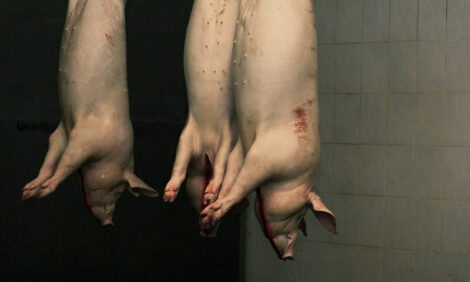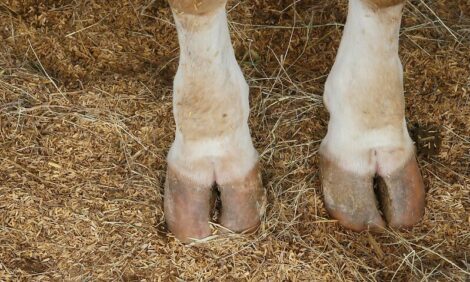



Early identification critical in preventing sow lameness
Sow lameness continues to trouble hog operations in the US, causing high numbers of involuntary removals from herds. These expensive sow removals can be reduced by identifying lameness issues early and addressing equipment hazards that lead to sow injuries, reported Michael Pierdon, VMD, Four Star Veterinary Service, Elizabethtown, Pennsylvania.
“When a sow develops lameness that is severe enough that she is no longer able to get to the feeder…she will need to be removed regardless of her age or production history or stage of gestation,” Pierdon added. “Those involuntary removals are really damaging financially to sow herds.”
Identify gait issues early
Injury to the hoof and foot cause most lameness that eventually leads to removals. Pierdon said these injuries can go unnoticed by farm staff because pigs are good at hiding them.
“Those injuries can become infected, and the infection festers and becomes more severe over time, eventually causing significant damage within the joint, bones or foot,” he said.
“Once the damage progresses to that point, the animals aren’t recoverable. Medically we’re just not able to manage them back to health.”
The key to preventing this scenario is training farm workers to identify animals much earlier in the course of the disease.
“We need to identify animals when they have a gait abnormality or are not walking smoothly,” Pierdon explained.
“Aggressive antibiotic treatment strategies can have some success in resolving these issues before they develop into a [high] level of severity.”
If farm workers wait to treat an animal until it is unwilling to put weight on a leg, it is too late. Clinically resolving lameness at this point is very unlikely.
Pen-gestation hazards
“Lameness has really risen in importance as we’ve begun to house sows more often in group-housing situations,” Pierdon added. “An animal needs to be able to move and move effectively without pain to compete and thrive in a group environment.”
The move to group housing offers more opportunities for sows to move around, interact with other sows and become injured, which begins the lameness process, he explained.
In addition, many sow barns are equipped with slatted flooring designed for stall gestation. When converted to pens, the slats are too wide for sows to walk on, and injuries occur when feet get stuck in the slat gaps.
Pierdon said he also has seen injuries due to hardware issues, like sharp edges sticking out of the floor or feeders facing the wrong direction.
In barns where the facility issues were fixed, the number of lameness issues improved, he added.
Genetic improvements
Compounding the lameness issue are sow genetics that haven’t focused on traits needed for pen gestation.
“Animals with heavier bones, with bigger feet, will likely do better as far as lameness goes,” he said. “We really need help from our genetic partners on that, on selecting for traits that ensure soundness and survivability in these housing systems.”
While lameness will never be fully solved, Pierdon believes the industry will learn to manage it better.
“The biggest drivers will be facility design and genetic improvement, refocusing on structure and durability on the genetic side,” he said. “But also continuing to experiment and study facility design to find options that reduce the risk of injury to the animals.”
In the meantime, attention to the first signs of lameness will help farms better handle sow injuries and lower involuntary removals from the herd.








